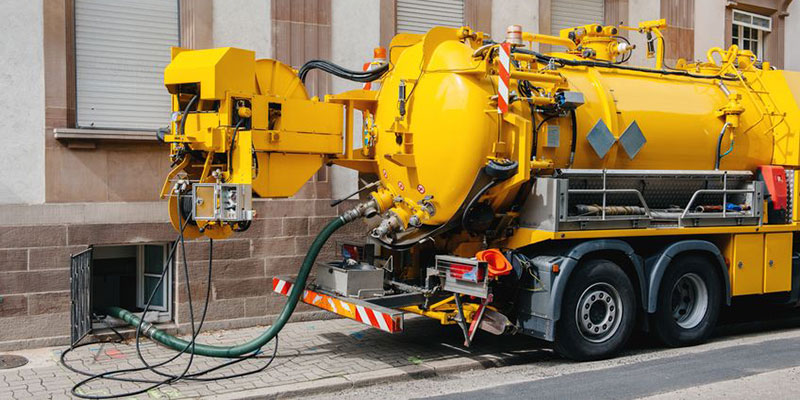A truck works to clean up sewage overflow from a blocked line. In the U.S., FOG is responsible for almost half of sanitary sewer overflows.
On-site DAF and waste-to-energy systems can help you comply with discharge regulations and capture energy from wastewater
A major challenge in wastewater treatment comes from fat, oil, and grease (FOG), a category that includes emulsions or solids composed of esters of glycerol, fatty acids, or triglycerides derived from animal or vegetable sources.
Stubbornly insoluble in water, FOG floats on water and quickly turns into soap in an alkaline medium. Such characteristics make FOG one of the most challenging substances to remove from wastewater. If discharged untreated, it can lead to serious environmental problems.
Some factories send their wastewater to municipal treatment plants for FOG removal, but it’s expensive. Instead, on-site treatment is becoming an increasingly attractive option for many industries.
Why Is FOG Challenging?
FOG accounts for 25-35% of total chemical oxygen demand (COD) in raw wastewater flowing into municipal wastewater treatment plants. Although often discussed together, triglycerides that remain liquid at room temperature are considered “oil,” while “grease” refers to fats, oils, waxes, and soaps that clog pipes. It can coagulate with other materials into massive “fatbergs” that shut down sewer mains, like the 820-foot, 200-metric-ton fatberg discovered beneath the streets of Liverpool this year.
Each year, FOG is blamed for approximately 47% of the United States’ 10,350–36,000 sanitary sewer overflows and 50% of the United Kingdom’s 25,000 flooding incidents.
Grease also makes aerobic and anaerobic treatment less effective, and subsequently, the lower-quality effluent can threaten aquatic ecosystems and groundwater. Even a low load can make water unsuitable for drinking.
Processes Used to Remove FOG
Insoluble FOG is frequently removed by gravity separation, while biological processes are used more frequently to remove soluble compounds. A common pretreatment to decrease FOG load before biological treatment includes dissolved air flotation (DAF), combined with coagulation and flocculation.
In DAF, iron chloride or aluminum polychloride is used to destabilize colloids and breaks them into small particles. Polyelectrolytes then coagulate the particles into larger “flocs.” Then, air bubbles are introduced that adhere to and float the flocs to the surface. Finally, the sludge is mechanically skimmed from the surface.
Other processes used include:
- Coagulation with alum and ferric chloride
- Sulfuric acid or hydrochloric acid treatment at pH 3
- Activated sludge and membrane processes, which are often combined
- Up-flow anaerobic sludge blanket (UASB)
- Adsorption
- Ionizing radiation
Cost-Saving Opportunities
The oil refining industry and the meat, dairy, and food processing industries all need to remove FOG from their wastewater. Operators in many industries have opted to remove FOG on-site to meet environmental discharge standards or lower municipal disposal costs.
In Slovenia, for instance, Ekolat, a dairy processing company, produces mozzarella and other fresh cheeses and specialty items from 130,000 L/w of milk. Its wastewater contains approximately 580 mg/L of fats. With local infrastructure straining to treat its wastewater, the company’s bills soon became too high.
Ekolat chose Fluence to install a DAF system that helped remove virtually all fats from its wastewater, realizing significant savings on municipal treatment with no break in production.
Waste-to-Energy Opportunities
While high FOG poses many challenges in wastewater treatment, it does come with an advantage: Its high organic load is ideal for waste-to-energy systems. Wastewater from food production can carry 10 times the organic load of ordinary municipal wastewater, which already contains approximately five times the energy needed to treat it. Adding anaerobic digestion (AD) to wastewater treatment generates biogas that can be sold or used to power operations.
Fluence has decades of experience deploying sustainable and cost-effective DAF, biological, membrane, and waste-to-energy systems worldwide. Contact Fluence to discuss a FOG removal process fine-tuned to your operation’s particular wastewater stream and regulatory challenges.

